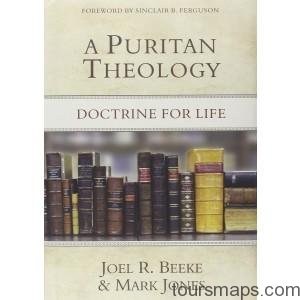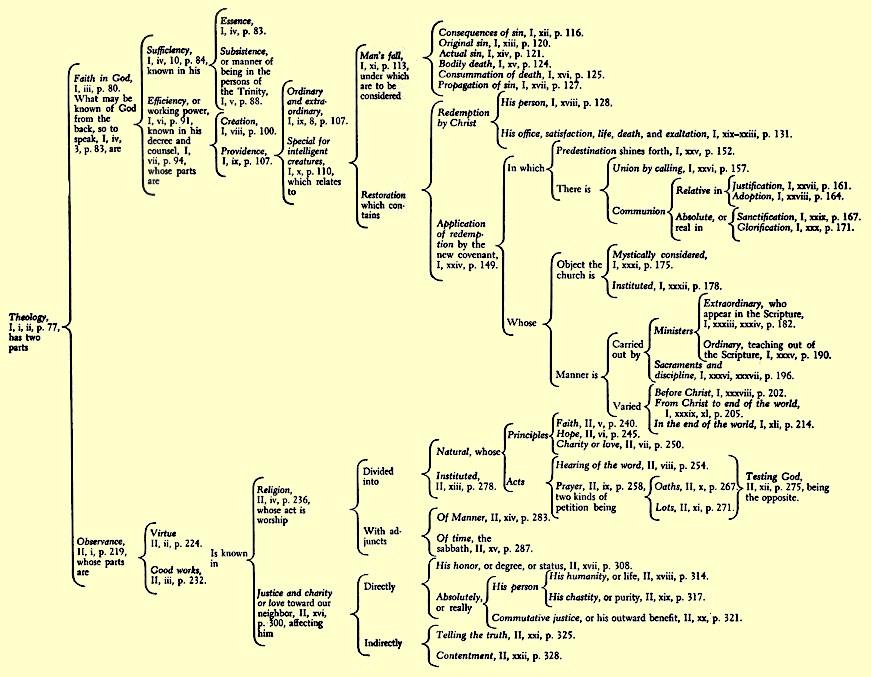One of the hallmarks of Puritanism is the theological theme of transformation. At the center of the Puritan idea was the impetus to transform the Church
of England by purifying her of all ungodliness. This included transforming the liturgy, prayer books, worship, and government.
William Perkins was one of the first notable theologians to write extensively about the transformation of English religious and social life during the reign of
Queen Elizabeth I. Perkins was a great influence on William Ames, who picked up where Perkins left off by writing about the transformation of church
polity. Ames also is well known for his refutation of Roman Catholic criticisms of the Protestant Reformation. Two of Ames’s greatest works are The
Marrow of Theology (1623) and Cases of Conscience (1630).
Commitment to the written and preached Word of God, as presented in the Holy Scriptures, is not only a characteristic of the Reformation but is honed
and sharpened in the Puritan movement. Preachers such as Richard Sibbes, Thomas Goodwin, and John Owen brought Puritan theology and ideals to
the populace. Puritans believe that the Bible is the ultimate authority of the church and the life of the believer. This may have been in reaction to the
Catholic notion that the papacy is the earthly authority of the Church. Either way, the Bible played the dominate role in shaping the life and thought, law
and practice of Puritan magistrates, clergy and laity.
Puritans placed theological emphasis on a personal conversion experience. This was one way in which church officers could tell the redeemed, or elect,
from those not redeemed. To become a member of Puritan church one would have to testify to one’s personal conversion and give evidence of true
repentance, the turning from sin to God. In Puritan America this became of prime importance, because church membership was a prerequisite to voting
and holding public office. Puritans were particularly interested in proving that the individual’s conversion was predetermined by God, not achieved by
themselves. Theologically speaking, the believer was elected, or chosen, by God to be saved.
Richard Baxter was probably the greatest pastor and evangelist of the Puritan movement. He is noted as having been instrumental in the conversion of an
entire town, Worcestershire, England. Baxter was too poor to attend university, yet he published 186 books and became known as one of the movement’s
greatest thinkers. Not only was he remembered for his fidelity as a pastor, but he also was known for his commitment to church unity and peace; he
sought to find a middle ground amid some of the movement’s greatest theological controversies. Baxter spent time in prison under James II; he was
released and survived the Revolution of 1688.
The second wave of immigration to America in the early 1600s did little to boost church membership and attendance in the Bay Colony. In fact, by 1650,
only about 17 percent of those living in the colony were members of a church. Part of this was due to the Puritans’ insistence on the articulation of a
personal conversion experience for church membership. As a means of boosting membership roles and to define baptism, Puritans allowed for partial
membership (called the Half-way Covenant). Basically, they permitted the baptism of children of parents who had been baptized yet were not full
members of a church. These children and their parents were half-members and were subject to the governance of the church but could not vote or
participate in the Lord’s Supper.
A Puritan was expected to exhibit certain evidences of salvation. One of these was the pursuit of holy living according to the commandments of Scripture.
A pious life was sure evidence of a believer’s salvation. For example, the Lord’s Day (Sabbath) was set aside for the worship of God and the fellowship
of believers. Businesses and recreational activities ceased on Sundays. Puritans were also expected to devote themselves to daily prayer and the reading
of Scripture. Two mechanisms for purifying the community were the practice of self-examination and the confessing of one’s sins to another believer,
sometimes in a conference or meeting.
The Puritans had a sophisticated system not only of personal ethics but also of social ethics and communal living. At the center of most Puritan towns
would be a common area and meetinghouse, the latter typically used for religious worship and business meetings. The idea was to provide space were
people could get together, commune, and promote the common good.
Puritans were also asked to covenant or contract with one another. This was done to promote the notion that individuals do not exist as islands but rather
in relation to each other. By covenanting with God and each other, Puritans were encouraged to love and care for one another by practicing wise
stewardship of their wealth and material possessions.
Closely tied to charitable living was the Puritan emphasis on vocation and calling from God. People living in a community were believed to be called by
God to provide a particular function or service in the community. Puritans were admonished to live out their religious convictions in their work. This is
sometimes referred to as the Puritan work ethic. Everyone had a function in society and everyone was responsible for supporting and upholding those in
need.
Puritan Theology Photo Gallery
Maybe You Like Them Too
- Top 10 Islands You Can Buy
- Top 10 Underrated Asian Cities 2023
- Top 10 Reasons Upsizing Will Be a Huge Travel Trend
- Top 10 Scuba Diving Destinations
- The Best Cities To Visit in The World




